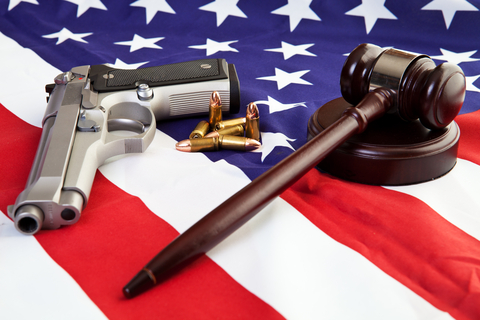Open Carry: What You May Not Already Know…
By Andy Tiwari

As most Texans know, they now have the right to openly carry a licensed handgun in a belt or shoulder holster. But did you know that the holster is important?
It is still generally an offense to openly display a handgun in public. While it must be a holster attached to the shoulder or hip, whether it’s open or with a restraint is undecided – for now, old west-styled hip-holsters are “ok.”
The term handgun is also important: even before HB910, rifles could be open-carried without a license (if not done to “cause alarm”). So what is a handgun? Under the Texas Penal Code, it’s a firearm designed “to be fired with one hand.” Expect arguments about whether you or your buddy can fire that AR-15 pistol with one hand.
Many businesses have been reluctant to embrace the new law. In explaining why Whataburger doesn’t permit openly carried handguns, its CEO Preston Atkinson (an avid hunter) explained many employees and customers would be”uncomfortable being around someone with a visible firearm.” It’s no surprise many other chains like TGI Fridays and Chili’s enacted similar bans, as have local companies like HEB (which still allows concealed carry). There are exceptions: San Antonio standard Tip Top Café says openly carried handguns and chicken fried steaks go fine together.
Open Carry Laws incorporating multiple signs
By now, most Texans expect to see signs explaining whether a business prohibits open carry. Most are also aware a second sign is needed if the business wants to prohibit both open and concealed carry. Many aren’t aware, however, the law requires businesses to post open-carry prohibitions on all entrances the public might use. Failing to mark every entrance properly could render other notices ineffective.
But what does it mean to clearly mark an entrance? Meeting the technical requirements means the signs must be: in both English and Spanish, include a 38-word message referring to the Texas Penal Code, be in contrasting colors, and contain “block letters” of at least 1 inch in height. What do you get when you put everything together? As Donald Trump might say, a sign that’s huge: making everything fit makes the average display 2’ by 3’. Normal doors measure 3 feet in width, so expect to lose some door real estate, and there is no final word yet on how close the signs have to be to the entrance to be noticeable.
Understanding Open Carry Sign Laws in Texas
But what if you use ½ inch calligraphy lettering on a 1’x1’ placard? Or what if your sense of style makes you allergic to posting 3-foot signs in front of your salon? The law provides a fallback, as a property owner can instead provide individual, written or oral notice that handguns aren’t allowed. But be prepared to memorize some legal jargon or make some note cards: the law technically requires the alternative notice contain the same language as the required signs. Note it’s a Class C misdemeanor if you ignore proper signs but a Class A misdemeanor if you ignore proper signs AND stay on the premises after getting an oral notice to leave.
The hospitality industry is a $13.4 billion business in San Antonio – that’s still concerned about the new law. While most of this isn’t really new law, most readers probably aren’t aware in addition to signage, hotels must state their policies relating to firearms on reservation websites. Guests who make reservations via phone must receive written confirmation explaining how a guest can review the hotel’s policies on firearms. Expect TripAdvisor handgun accessibility ratings to follow (this isn’t farfetched – there are several Android and IOS apps tracking which businesses are carry friendly and which aren’t).
Other quirky rules remain.
The Texas Penal Code prohibits handguns in establishments that derive more than 51 percent of their revenue from alcohol sales (and separate signage is also required). Theoretically, a customer could openly carry an assault rifle into a bar and be within his/her rights – unless the business asks the patron to leave. If the patron refuses, that individual may then be subject to criminal trespassing charges. Ultimately, the Texas Alcoholic Beverage Code and Commission Rules place the responsibility on the bar owner to police weapons on the premises. As the TABC stated in a press release, “if an individual does choose to carry a rifle or shotgun into a TABC-licensed business, the individual is placing the business owner’s TABC license at risk.” However the bar owner can carry a handgun on the premises! For the record, even if you’re not at a bar, carrying while intoxicated is illegal.
With some of the remaining ambiguities, the law may see refinement in the future. But it’s here to stay, and if your business allows open carry, then employees should be trained on the basics of compliance with basic gun safety for emergencies. If your business doesn’t allow weapons, staff must also be trained on how to provide proper notice and how to de-escalate conflict with someone who believes they are lawfully exercising their rights. Business owners should establish guidelines explaining which employee will be designated to approach an offender, what the procedure will entail, and when local authorities will be contacted. The responsibility should be delegated to an employee experienced in customer relations, and businesses would be wise to consider the law’s allowance of private written notice instead of oral confrontation.
At a minimum, smart business practice dictates these rules be implemented fairly in the interest of customer service beyond legal mandates.
If you need legal advice, schedule a meeting with Tiwari + Bell PLLC through our website or by calling (210) 417-4167.
